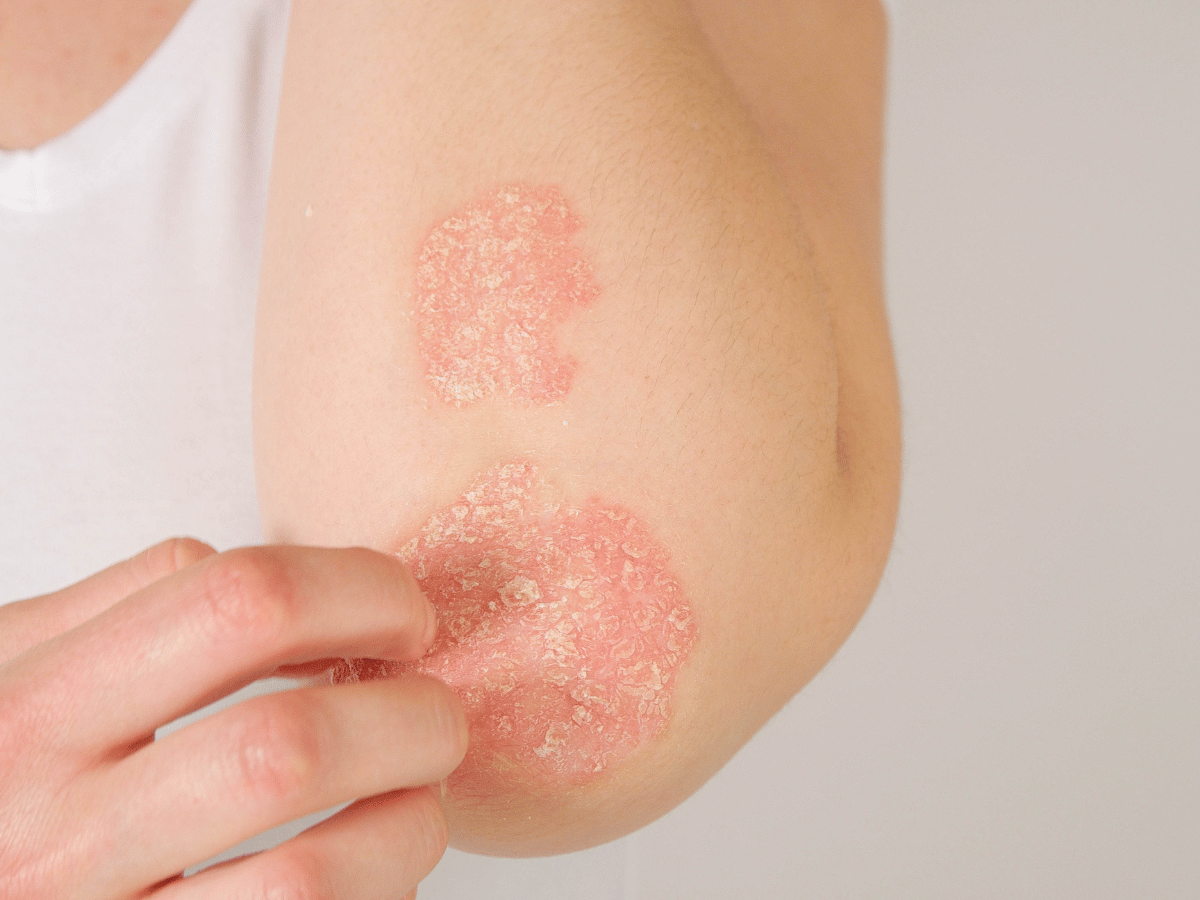What Is Psoriasis?
Psoriasis is a non-contagious, lifelong skin disorder affecting nearly 3 percent of the world’s population. It appears as a red, thickened area with silvery scales that form most often on the scalp, elbows, knees or lower back.
When you have psoriasis, your immune system instructs your skin cells to grow faster than they should. New skin cells normally replace old skin cells monthly. However, the faulty response of psoriasis means your body does not have the chance to keep up with the growth. Rather than shedding old skin cells as your body would normally do, skin cells pile on top of each other and cause dry, red, and flaky patches to appear.
CAUSES
Psoriasis is caused by an overactive immune system that accelerates skin cell production, leading to the buildup of thick, scaly patches. It is often influenced by genetic factors and environmental triggers.
RISK FACTORS
Risk factors for psoriasis include a family history of the condition, stress, obesity, infections, smoking, and certain medications, which can all exacerbate symptoms or trigger flare-ups.
SYMPTOMS
Symptoms of psoriasis commonly include red patches of skin covered with silvery scales, which can cause itching, burning, or soreness. These plaques often appear on the scalp, elbows, knees, and lower back.
TYPES
The Five Different Types of Psoriasis:
Erythrodermic: This type is exceptionally rare, affecting just two percent of psoriasis sufferers. The primary symptoms of erythrodermic psoriasis are intense reddening of skin and skin that sheds in large sheets rather than small patches.
Guttate: Approximately eight percent of people living with psoriasis have this type. Common symptoms include small and round red spots on the torso, arms, legs, or anywhere else on the body.
Inverse: Up to 25 percent of people with psoriasis have this type. Deep red spots and itchiness in the skin folds, including underneath the breasts, genital areas, buttocks, and underarms, are the most common symptoms.
Plaque: As the most common type of psoriasis, plaque psoriasis affects approximately 80 percent of people with this immune response condition. Plaques are often itchy and painful, and they can appear purple, red, or silver depending on your skin tone.
Pustular: Roughly three percent of people with psoriasis have this type. You will notice white painful sacs filled with pus that may or may not have reddened skin surrounding them. The sacs can be on one or two areas of the body or your entire body.
FAQs
How is psoriasis diagnosed?
The providers at Anne Arundel Dermatology Group do a thorough physical exam, review your symptoms, and discuss with you your medical and family history to determine if you have psoriasis. No blood test can diagnose it, but they may order a skin biopsy to see if the psoriatic skin is thicker and inflamed.
What is psoriatic arthritis?
Psoriatic arthritis is a form of arthritis that can affect some people with psoriasis. It causes pain and swelling in the joints. If you have these problems, mention them to your doctor or nurse.
People with psoriatic arthritis can take medicines to reduce pain and swelling. Exercise and physical therapy can also help. Plus, some of the same medicines that help with the skin problems caused by psoriasis also help with psoriatic arthritis.
Visit Anne Arundel Dermatology Group
Our team provides thoughtful, expert care for all your skin health needs. We are proud to offer the most advanced general, surgical, and cosmetic dermatological services in the Mid-Atlantic and Southeastern regions.

